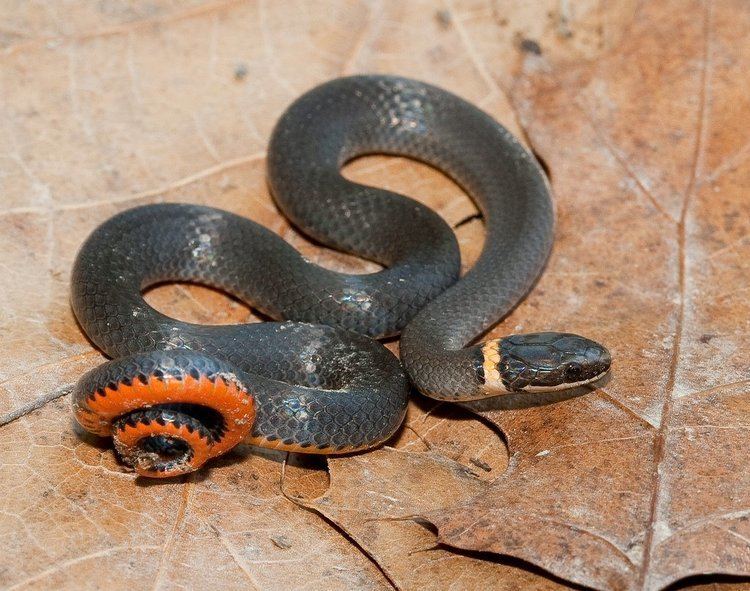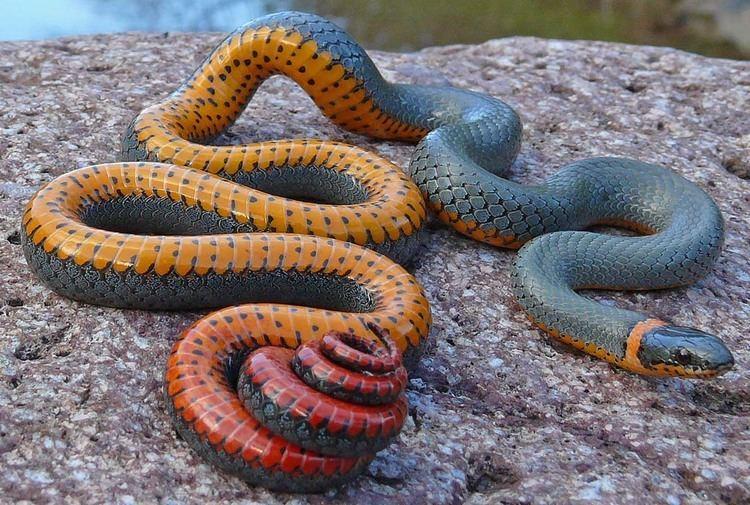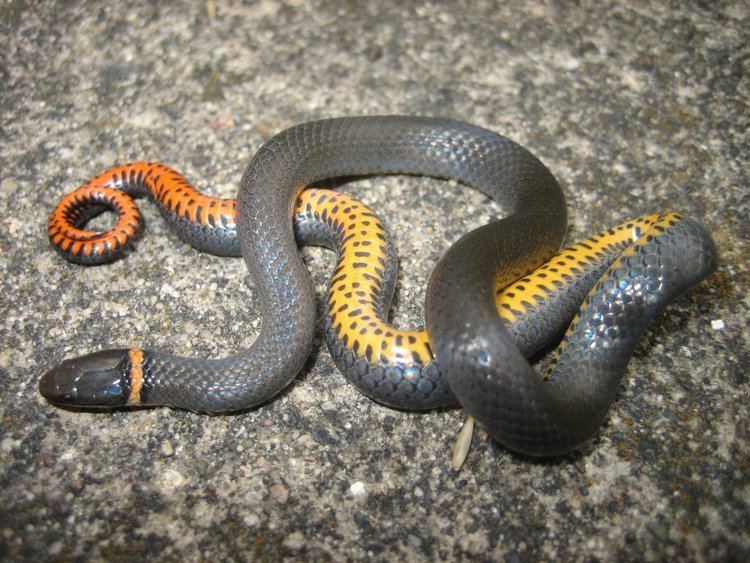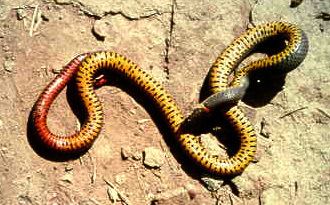Subphylum Vertebrata Rank Subspecies | Phylum Chordata Class Reptilia Suborder Serpentes | |
 | ||
Similar Ring‑necked snake, Carphophis vermis, Coluber constrictor flaviventris, Diadophis punctatus regalis, Tropidoclonion | ||
Prarie ringneck snake diadophis punctatus arnyi
Diadophis punctactus arnyi, also known as the prairie ringneck snake, is a subspecies of small, thin snake in the Colubrid Family.
Contents
- Prarie ringneck snake diadophis punctatus arnyi
- Etymology
- Geographic range
- Description
- Diet and behavior
- Habitats
- Reproduction
- Brumation and estivation
- References

Etymology
The subspecific name, arnyi, is in honor of Samuel Arny, who collected the type specimen.
Geographic range

This snake is very common within its range and can be found almost anywhere in Midwest North America, i.e., Iowa, Kansas, Missouri and northwestern Arkansas to South Dakota, Oklahoma and Texas.
Description
It has a black-grey head, a grey body, and an orange ring around its neck. The ring does not extend toward the underside. The underside is yellow for a third of the body, orange for another third, and red for the last third. The belly also has black flecks along it. This snake has a blunt head, a tiny mouth, and small eyes. Anteriorly the dorsal scales are usually in 17 rows (other eastern subspecies have 15 rows). A mature prairie ringneck grows to about 25–36 cm (9.8–14.2 in) long, record 42 cm (16 1⁄2 in).
Diet and behavior

This snake eats insects, frogs, salamanders, other snakes, lizards, and newborn rodents. It uses a weak venom (not harmful to humans) in the saliva in its mouth to immobilize its prey. It also uses constriction.
When approached, the snake's first intent is to flee. It is usually a slow snake, so it can be caught quickly. When picked up, it tries to escape but rarely bites (although it does happen). It may also twist its brightly colored tail and lie on its back to draw attention away from its head.
Habitats
The prairie ringneck snake (as its name suggests) lives in or near prairies and can often be found sunbathing or slithering out in the open. It can also be found under old logs, rocks, pieces of wood and sheets of tin. It likes to live under dead leaves and foliage in the woods, and in grasses in the prairie.
Reproduction
Between June and early August, female snakes of this species deposit between one to seven eggs, with an average clutch size of four. These eggs measure approximately 27 mm (1.1 inches) in length and 7 mm (0.28 inches) in width on average. Post-laying, the eggs expand in size as they develop. Incubation lasts about 60 days, culminating in the emergence of hatchlings. These young snakes, approximately 100 mm (3.9 inches) in total length, bear a strong resemblance to adult snakes, albeit with a distinctive bluish hue on their dorsal side.
Brumation and estivation
This snake will estivate in the summer if the temperature is to hot and brumate in the winter when it is too cold. This is because the snake is an ectotherm (that is, cold-blooded) and needs to stay warm enough or cool enough to survive. This is part of the reason why you can see them sunbathing when the temperature is warm.
http://www.californiaherps.com/noncal/misc/miscsnakes/pages/d.p.arny.html (click here for picture)
